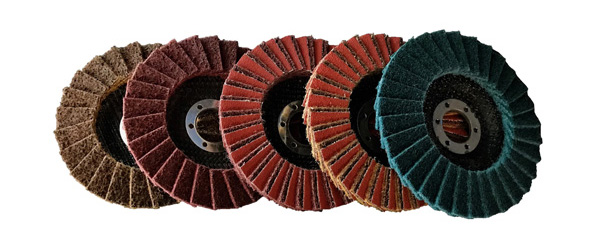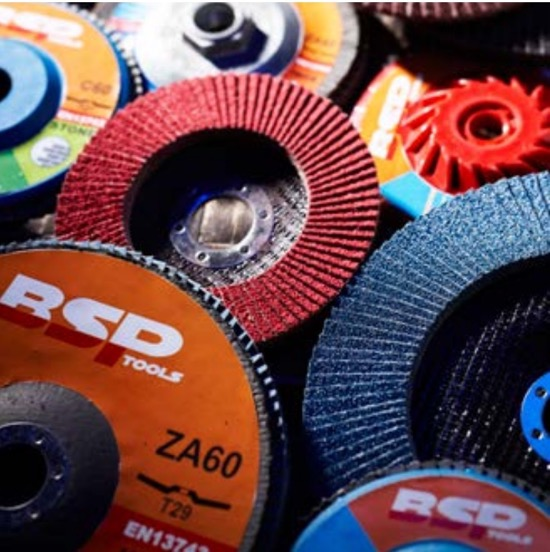Flap discs are versatile and essential tools for any DIY enthusiast. These abrasive tools are designed to grind, blend, and finish different surfaces, including metal, wood, and plastics. Choosing the right flap disc for your DIY job can be a daunting task, especially if you don’t know the different grits, materials, and types available in the market. In this article, we’ll discuss how to choose the right flap disc grit and type for your DIY job.
Flap Disc Grit
Grit is a measure of the abrasive particles’ size on the flap disc. The higher the grit number, the finer the abrasive particles on the disc. Flap discs come in different grits, ranging from coarse to fine. Choosing the right grit for your DIY job depends on the material you’re working on and the finish you want to achieve. Here are some guidelines on how to choose the right grit for your DIY job:
Coarse Grits Flap Discs (36-60)
36-60 grit flap discs are suitable for removing large amounts of material quickly. They’re ideal for grinding and smoothing rough surfaces and edges, including welds, burrs, and splatters. Coarse grits are perfect for heavy-duty tasks that require fast material removal, such as removing rust from metal surfaces, cleaning concrete surfaces, and leveling uneven wooden surfaces.
Medium Grits Flap Discs (80-120)
80-120 grit flap discs are perfect for blending and finishing surfaces. They’re suitable for removing small welds, blemishes, and surface imperfections. Medium grits are ideal for preparing surfaces for painting, staining, or varnishing. They’re also suitable for light metal removal and deburring.
Fine Grits Flap Discs (180-240)
180-240 grit flap discs are perfect for achieving a smooth, polished finish on surfaces. They’re suitable for removing scratches, swirls, and other imperfections on metal, wood, and plastic surfaces. Fine grits are ideal for achieving a high-quality finish on surfaces, such as polishing car bodywork, sanding furniture, and removing paint from delicate surfaces.
Extra-Fine Grits Flap Discs (320-600)
320-600 grit flap discs are suitable for achieving a mirror-like finish on surfaces. They’re ideal for polishing and buffing surfaces, such as stainless steel, aluminum, and chrome. Extra-fine grits are perfect for achieving a high-quality finish on delicate surfaces, such as automotive paint, jewelry, and fine woodwork.
Flap Disc Material
The material of the flap disc is another important factor to consider when choosing the right flap disc for your DIY job. Flap discs come in different materials, including aluminum oxide, zirconia alumina, ceramic alumina, and diamond. Here’s a brief overview of the different materials and their applications:
Aluminum Oxide
Aluminum oxide flap discs are the most common type of flap discs available in the market. They’re affordable and suitable for grinding and sanding a wide range of materials, including steel, aluminum, and wood. Aluminum oxide flap discs are ideal for light to medium-duty tasks and are perfect for preparing surfaces for painting, staining, or varnishing.
Zirconia Alumina
Zirconia alumina flap discs are more durable and long-lasting than aluminum oxide flap discs. They’re suitable for heavy-duty tasks that require fast material removal, such as grinding and sanding hard metals like stainless steel and titanium. Zirconia alumina flap discs are ideal for aggressive grinding and blending, and they’re perfect for removing welds, burrs, and splatters.
Ceramic Alumina
Ceramic alumina flap discs are the most durable and long-lasting flap discs available in the market. They’re suitable for heavy-duty tasks that require maximum material removal, such as grinding and sanding hardened steel and other metals. Ceramic alumina flap discs are ideal for aggressive grinding and blending, and they’re perfect for removing heavy rust, paint, and corrosion.
Flap Disc Type
The flap disc type is another important factor to consider when choosing the right abrasive tool for your DIY job. Flap discs come in two types, type 27 and type 29, and each type has its unique shape and applications.
Type 27 flap discs:
Type 27 flap discs have a flat shape with a slight angle on the flaps. They are ideal for grinding and finishing flat surfaces, such as welds, metal edges, and corners. Type 27 flap discs provide a smooth and consistent finish and are easy to control.
Type 29 flap discs:
Type 29 flap discs have a conical shape with a more aggressive angle on the flaps. They are ideal for grinding and finishing curved and irregular surfaces, such as pipes, tubing, and contours. Type 29 flap discs provide a more aggressive material removal and are suitable for heavy-duty applications.
When choosing the right flap disc type for your DIY job, you should consider the shape and contour of the surface you will be working on. If you need to work on flat surfaces, such as metal edges and corners, you should choose a type 27 flap disc. However, if you need to work on curved and irregular surfaces, such as pipes and tubing, you should choose a type 29 flap disc.
Conclusion
In conclusion, choosing the right flap disc grit and type for your DIY job is essential for achieving the desired result. You should consider the material you will be working on, the level of surface finish you want to achieve, and the shape and contour of the surface. By selecting the right flap disc grit, material, and type, you can improve your efficiency, productivity, and safety while completing your DIY project. Always remember to wear proper safety gear, such as goggles, gloves, and dust masks, when working with abrasive tools to protect yourself from injury and harmful dust.


